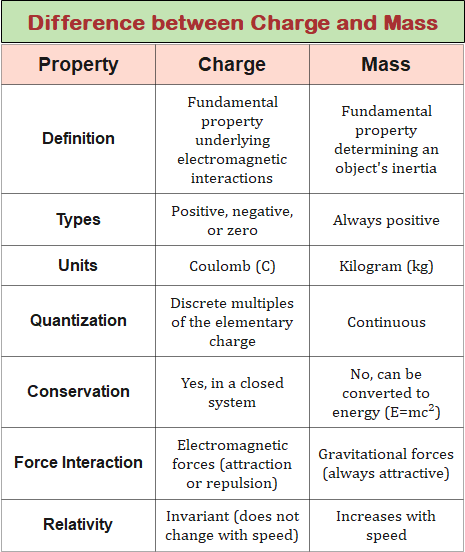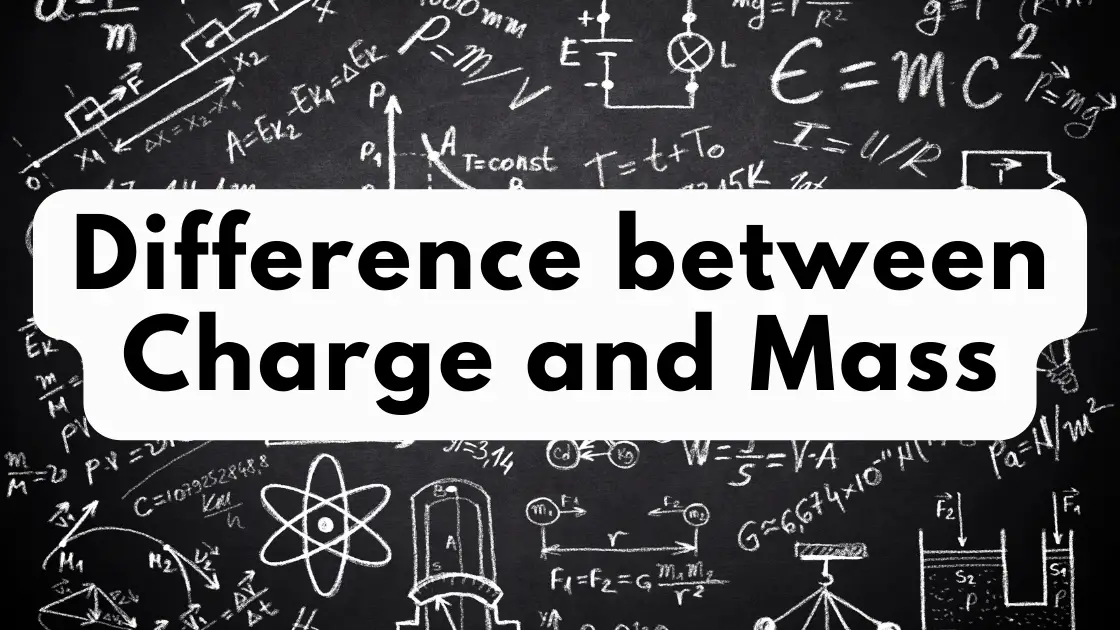We already know what is electric charge and mass is a measure of the amount of matter in an object. Both charge and mass are fundamental properties of matter. You can think of electric charge like the “mass” of electricity.
Mass is important for gravity because it determines how strongly objects pull on each other. In the same way, electric charge determines how strongly charged objects push or pull on each other. In this article we will do a short comparison of electric charge and mass.
Difference between Charge and Mass
We know that charge is an electrical property that determines electrical interaction (attraction or repulsion) and mass determines gravitational attraction. Table given below shows the difference between electric charge and mass.
| Property | Charge | Mass |
|---|---|---|
| Definition | The fundamental property of a particle that causes it to experience and generate electromagnetic forces. | The measure of the amount of matter in an object. Mass is also a fundamental property of a particle. |
| Units | Coulomb (C) is SI the unit of charge | Kilogram (kg) is SI the unit of mass |
| Existence | Particles can have positive, negative, or no charge. For example electrons have negative charge, protons positive charge, while the larger parts of atoms (neutrons) are neutral. | All particles and objects have mass. |
| Quantization | Charge is quantized – it comes in discrete amounts. | Mass is a continuous quantity. |
| Fundamental Particles | Quarks and leptons have fundamental charges of +2/3, -1/3, or 0. | Quarks, leptons, and other fundamental particles have fundamental masses. |
| Conservation | Charge is conserved – the total charge in a closed system remains constant. | Mass is not conserved because it can be converted into energy $(E=mc^2)$ |
| Interaction | Charged particles exert electromagnetic forces on each other. Electric forces between different charges may cancel out. | Massive objects exert gravitational forces on each other. The gravitational force between two masses is always attractive |
| Relativity | Charge is invariant under Lorentz transformations. It does not depend on speed. | Mass increases with velocity according to special relativity. |
To learn more about quantization and conservation of electric charge consider visit our article on Properties of Electric Charge
Important Note:-
For particle moving with velocity that approaches the speed of light mass is given by the relation
$$m = \frac{m_0}{\sqrt(1 – v^2/c^2)}$$
where:
- $m$ is the relativistic mass of the body
- $m_0$ is the rest mass of the body (the mass of the body at rest)
- $v$ is the velocity of the body
- $c$ is the speed of light
As an object’s velocity (v) approaches the speed of light (c), its relativistic mass approaches infinity. This is why it’s impossible for anything with mass to reach the speed of light.
Articles for further reading
Image for sharing



